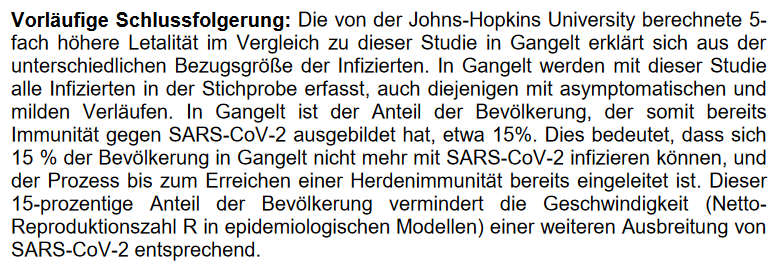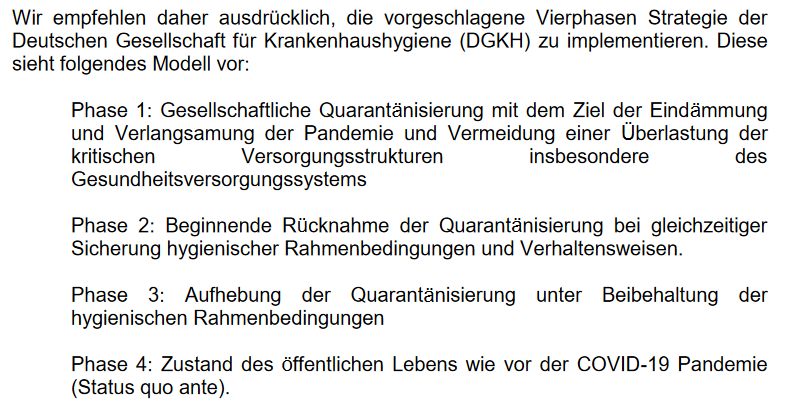Some Interesting points in the _preliminary_ results on representative antibody testing in Heinsberg, the region with the first larger #COVID19 outbreak in Germany. https://twitter.com/hbergprotokoll/status/1248174994816991232">https://twitter.com/hbergprot...
Study asked 600 households randomly chosen, 400 were responding and getting tested (1000 people). Current results are based on 500 people.
14% of those were tested positive for antibodies liked to SARS-CoV2, another 2% were tested positive for a current infection by PCR tests. This would mean 15% of the population have already acquired immunity.
For comparison: Only 5% had been tested positive any time since the likely outbreak on February 15. This would point to a significant undercount even in the most prominently affected region in Germany. Likewise, case fatality rate would be lower. They measured 0,37%.
Interesting side-point: They also think, that increased hygiene may lead to less severe outcomes as the initial virus load is reduced. We have seen similar reasoning especially for healthcare workers recently.
[As far as I understood, the reasoning is that larger initial loads are giving the virus a head start against the immune system. Once it is in, it starts to replicate in the throat until it can jump into the lungs. If the immune systems kills it before that jump, nothing happens]
In the end (and their presser) they think that it will be possible to reopen schools and kindergartens soon while maintaining higher hygiene standards to reach herd immunity without large death counts.
Some thoughts about limitations: They mention .99 specificity for antibody tests, but not the sensitivity. It may be possible, that those 15% include a larger part of patients immune to "common cold" corona viruses but not SARS-CoV2. Maybe their test is perfect, but we don& #39;t know
Furthermore, we have no confidence bounds included. They are arguably higher than for similar politics polls due to stronger biases in responses.
We also haven& #39;t seen a cross-validation if/how the 2% PCR positive fit to the 14% immune positive and the 0.37% dead. Some further modeling needed here.
So as always the next week should bring more clarity here. It is some early evidence that controlled herd immunity (Flatten the curve) may be a viable way, but too soon to judge. Notice however, that this would still mean 2-3x influenza deaths + possible long-term issues.
Felt this needed more clarity: 2/3 of households were responding, that is A LOT. But it seems likely people who felt very mild symptoms or had contact to others could be more responding than others. With common household spread on top this may skew data https://twitter.com/alxrdk/status/1248200040172212225?s=20">https://twitter.com/alxrdk/st...
There is a renowned pollster working with them, and they had to fill out a questionnaire to deal with such effects but pollster use experience to adjust for such problems. And there is no experience here.
Another point: They haven& #39;t published demographics of the a) population Gangelt and b) population in the sample. So I am surprised they compare it to the overall naive CFR for Germany without any demographic adjustments? I guess you will find more info at @hbergprotokoll soon!

 Read on Twitter
Read on Twitter






